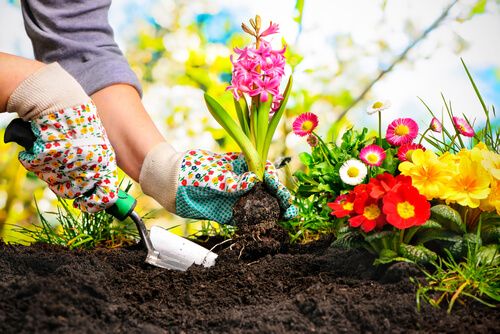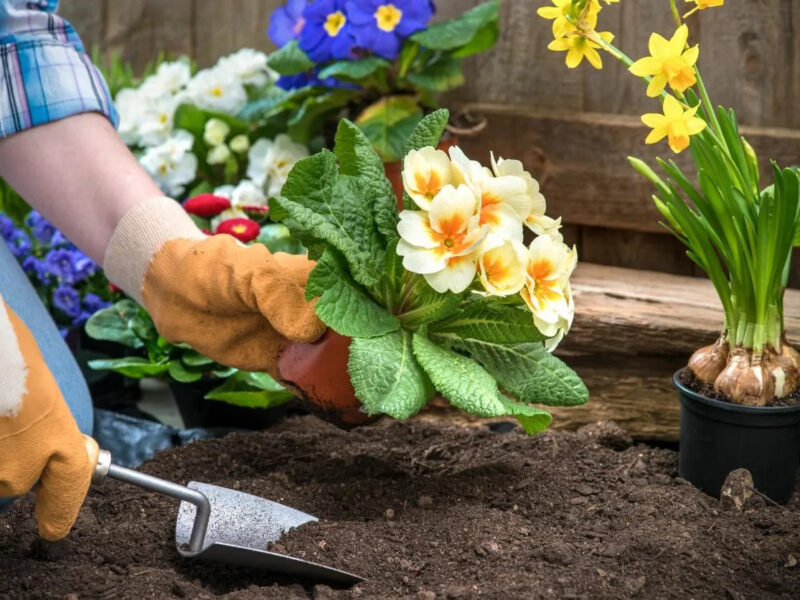How to Start Gardening: A Beginner’s Guide
Gardening is an enriching and therapeutic activity that not only beautifies your surroundings but also provides fresh produce and a sense of accomplishment. Starting a garden might seem daunting, but with the right guidance, anyone can cultivate a green thumb. This guide will walk you through the essentials of starting your gardening journey, ensuring that you reap the benefits of this rewarding hobby.
Why Start Gardening?
Before diving into the practical steps, it’s essential to understand why gardening is worth your time and effort. Gardening offers numerous benefits:
- Health and Wellness: Engaging in gardening can reduce stress, improve mood, and provide moderate physical exercise.
- Sustainability: Growing your own food reduces reliance on commercial agriculture, lowering your carbon footprint.
- Aesthetic Appeal: A well-maintained garden enhances the beauty of your home and provides a pleasant outdoor space for relaxation.
Choosing the Right Location
The first step in starting your garden is selecting an appropriate location. Consider the following factors:
- Sunlight: Most plants require at least 6-8 hours of direct sunlight daily. Observe your yard to identify areas that receive ample sunlight.
- Soil Quality: Good soil is crucial for plant health. Conduct a soil test to check pH levels and nutrient content. You may need to amend your soil with compost or other organic matter to improve its quality.
- Water Access: Ensure your garden is near a water source to make irrigation convenient. Consistent watering is essential, especially in the early stages of plant growth.
Planning Your Garden
A well-thought-out plan is vital for a successful garden. Here’s how to start:
- Decide on the Type of Garden: You can choose between a vegetable garden, herb garden, flower garden, or a combination of these. Your choice will depend on your interests and the available space.
- Layout Design: Sketch a layout of your garden, marking the locations of different plants. Consider the mature size of each plant to avoid overcrowding.
- Seasonal Considerations: Plan for year-round gardening by selecting plants that thrive in different seasons. This ensures that your garden remains vibrant throughout the year.
Selecting Plants
Choosing the right plants is crucial for your garden’s success. Here are some tips:
- Start with Easy-to-Grow Plants: Beginners should start with hardy plants that are easy to care for. Some examples include tomatoes, basil, marigolds, and zinnias.
- Consider Native Plants: Native plants are adapted to your local climate and soil conditions, making them easier to grow and maintain.
- Mix Annuals and Perennials: Annual plants provide quick blooms and produce, while perennials return year after year, offering long-term beauty and stability to your garden.
Preparing the Soil
Proper soil preparation sets the foundation for a healthy garden. Follow these steps:
- Clear the Area: Remove any weeds, rocks, or debris from your garden area.
- Loosen the Soil: Use a garden fork or tiller to loosen the soil to a depth of about 12 inches. This improves root penetration and drainage.
- Add Organic Matter: Incorporate compost, manure, or other organic matter into the soil to enhance its fertility and structure.
Planting Your Garden
Once your soil is ready, it’s time to start planting. Here’s how:
- Follow Planting Guidelines: Each plant has specific planting requirements. Follow the guidelines on seed packets or plant tags for spacing, depth, and other considerations.
- Watering: Water the plants thoroughly after planting to help them establish roots. Keep the soil consistently moist but not waterlogged.
- Mulching: Apply a layer of mulch around your plants to conserve moisture, suppress weeds, and regulate soil temperature.
Caring for Your Garden
Maintaining your garden requires ongoing care and attention. Here are some essential tasks:
- Watering: Regular watering is crucial, especially during dry periods. Water deeply and infrequently to encourage deep root growth.
- Weeding: Remove weeds regularly to prevent them from competing with your plants for nutrients and water.
- Fertilizing: Use organic fertilizers to provide essential nutrients to your plants. Follow the recommended application rates to avoid over-fertilization.
- Pruning and Deadheading: Regularly prune your plants to remove dead or diseased parts. Deadheading (removing spent flowers) encourages more blooms and extends the flowering season.
Dealing with Pests and Diseases
Pests and diseases can pose challenges to your garden. Here’s how to manage them:
- Monitor Regularly: Inspect your plants regularly for signs of pests or diseases. Early detection allows for timely intervention.
- Natural Remedies: Use natural pest control methods such as neem oil, insecticidal soap, or introducing beneficial insects like ladybugs and predatory wasps.
- Preventive Measures: Practice crop rotation, proper spacing, and good sanitation to prevent the spread of diseases.
Harvesting and Enjoying Your Garden
The ultimate reward of gardening is the harvest. Here’s how to make the most of it:
- Harvest at the Right Time: Pick fruits, vegetables, and herbs at their peak ripeness for the best flavor and nutritional value.
- Share the Bounty: If you have an abundant harvest, share with friends, family, or neighbors. Gardening can foster a sense of community.
- Preserve the Harvest: Learn methods of preserving your produce, such as canning, freezing, or drying, to enjoy your garden’s bounty year-round.
Conclusion
Starting a garden is a journey that brings joy, satisfaction, and numerous benefits to your life. By following these steps and dedicating time and effort, you can create a thriving garden that enhances your home and well-being. Remember, gardening is a continuous learning process, so embrace the experience, experiment with new plants, and enjoy the fruits of your labor. Happy gardening!



